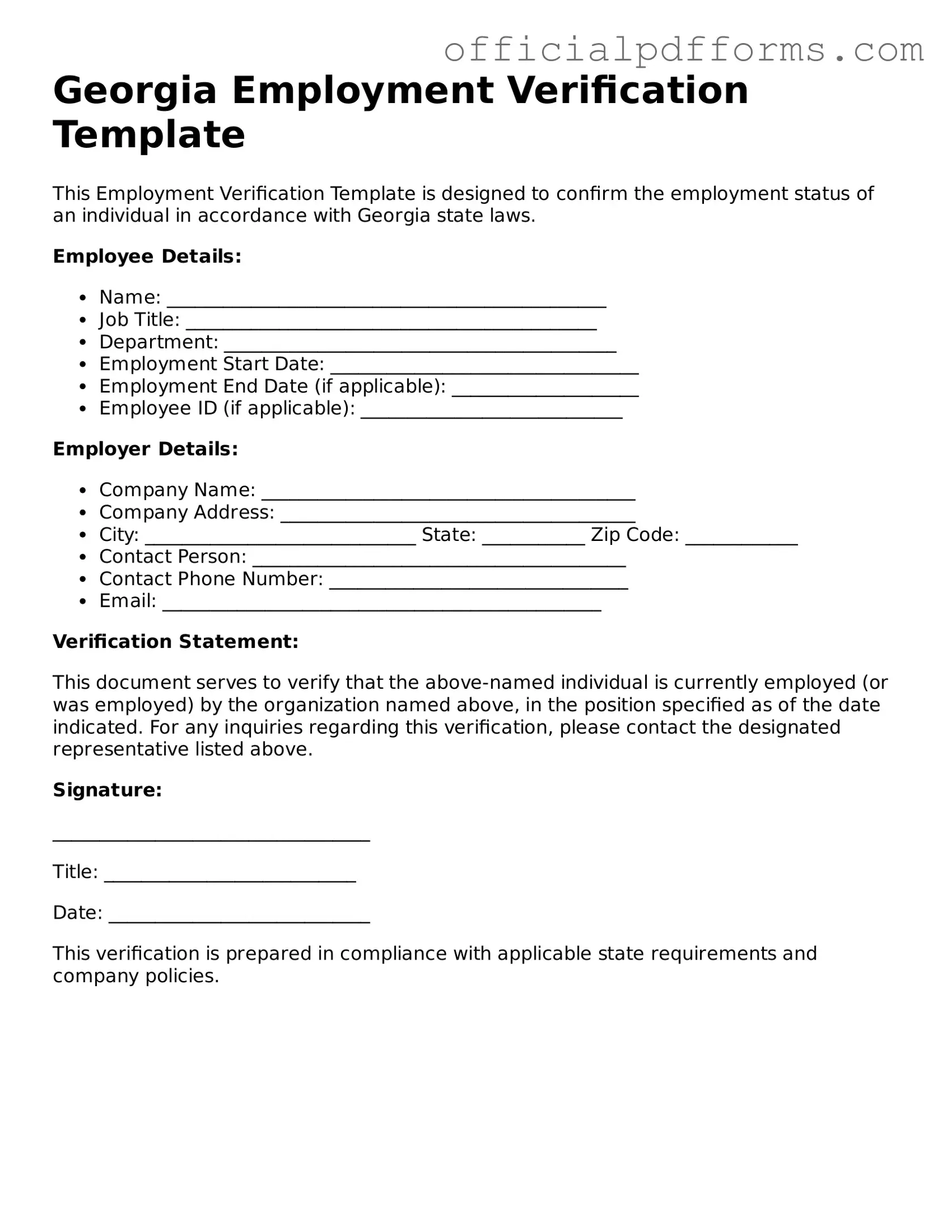The Georgia Employment Verification form is a document used to confirm an individual's employment status. It is often requested by various entities, such as banks, landlords, or government agencies, to verify that a person is currently employed and to provide details about their job position, salary, and duration of employment.
Typically, the form is filled out by employers or human resources departments. They provide the necessary information about their employees when requested. However, the employee may need to initiate the process by requesting the verification from their employer.
The form generally includes several key pieces of information:
-
Employee's name and contact information
-
Employer's name and contact information
-
Job title and description
-
Employment start date and, if applicable, end date
-
Salary or hourly wage
-
Work status (full-time or part-time)
To request an Employment Verification form, an employee should contact their employer's human resources department. A simple email or phone call may suffice. It is helpful to specify the reason for the request and any deadlines that may apply.
Generally, employers do not charge a fee for providing employment verification. However, policies may vary by company. If there is a fee, the employer should inform the employee beforehand.
The time frame for receiving the completed form can vary. In many cases, employers can provide the verification within a few days. However, during busy periods or if additional information is needed, it may take longer. It is advisable to allow sufficient time when making a request.
No, the Employment Verification form must be completed and signed by the employer or an authorized representative. This ensures that the information provided is accurate and trustworthy.
If an employer refuses to complete the form, the employee should first understand the reason behind the refusal. It may be due to company policy or a misunderstanding. Open communication can often resolve the issue. If necessary, the employee may seek assistance from a supervisor or human resources manager to address the situation.
